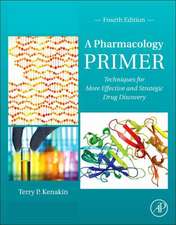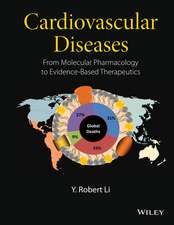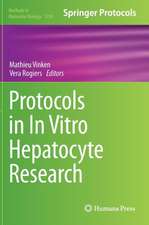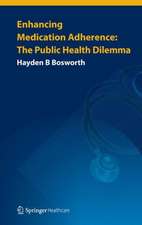Radiocontrast Agents: Handbook of Experimental Pharmacology, cartea 73
Editat de M. Sovak Contribuţii de T. Almenen Limba Engleză Paperback – 19 ian 2012
Din seria Handbook of Experimental Pharmacology
- 5%
 Preț: 3517.78 lei
Preț: 3517.78 lei - 5%
 Preț: 1425.97 lei
Preț: 1425.97 lei - 5%
 Preț: 1435.28 lei
Preț: 1435.28 lei - 5%
 Preț: 1430.52 lei
Preț: 1430.52 lei - 5%
 Preț: 1930.69 lei
Preț: 1930.69 lei - 5%
 Preț: 1922.47 lei
Preț: 1922.47 lei - 5%
 Preț: 1937.46 lei
Preț: 1937.46 lei - 5%
 Preț: 2117.58 lei
Preț: 2117.58 lei - 5%
 Preț: 2119.96 lei
Preț: 2119.96 lei - 5%
 Preț: 2117.38 lei
Preț: 2117.38 lei - 5%
 Preț: 1088.15 lei
Preț: 1088.15 lei - 5%
 Preț: 1098.27 lei
Preț: 1098.27 lei - 5%
 Preț: 1420.29 lei
Preț: 1420.29 lei - 5%
 Preț: 1104.84 lei
Preț: 1104.84 lei - 5%
 Preț: 1104.84 lei
Preț: 1104.84 lei - 5%
 Preț: 1108.14 lei
Preț: 1108.14 lei - 5%
 Preț: 1106.69 lei
Preț: 1106.69 lei - 5%
 Preț: 1105.77 lei
Preț: 1105.77 lei - 5%
 Preț: 1174.35 lei
Preț: 1174.35 lei - 5%
 Preț: 408.48 lei
Preț: 408.48 lei - 5%
 Preț: 409.63 lei
Preț: 409.63 lei - 5%
 Preț: 539.89 lei
Preț: 539.89 lei - 5%
 Preț: 720.47 lei
Preț: 720.47 lei - 5%
 Preț: 733.09 lei
Preț: 733.09 lei - 5%
 Preț: 731.27 lei
Preț: 731.27 lei - 5%
 Preț: 746.43 lei
Preț: 746.43 lei - 5%
 Preț: 747.72 lei
Preț: 747.72 lei - 5%
 Preț: 725.24 lei
Preț: 725.24 lei - 5%
 Preț: 742.80 lei
Preț: 742.80 lei - 5%
 Preț: 393.23 lei
Preț: 393.23 lei - 5%
 Preț: 735.66 lei
Preț: 735.66 lei - 5%
 Preț: 728.33 lei
Preț: 728.33 lei - 5%
 Preț: 389.52 lei
Preț: 389.52 lei - 5%
 Preț: 730.71 lei
Preț: 730.71 lei - 5%
 Preț: 740.58 lei
Preț: 740.58 lei - 5%
 Preț: 730.19 lei
Preț: 730.19 lei - 5%
 Preț: 723.42 lei
Preț: 723.42 lei - 5%
 Preț: 731.27 lei
Preț: 731.27 lei - 5%
 Preț: 726.68 lei
Preț: 726.68 lei - 5%
 Preț: 3516.49 lei
Preț: 3516.49 lei - 5%
 Preț: 729.26 lei
Preț: 729.26 lei - 5%
 Preț: 737.11 lei
Preț: 737.11 lei - 5%
 Preț: 730.92 lei
Preț: 730.92 lei - 5%
 Preț: 738.78 lei
Preț: 738.78 lei - 5%
 Preț: 909.94 lei
Preț: 909.94 lei - 5%
 Preț: 720.10 lei
Preț: 720.10 lei - 5%
 Preț: 734.74 lei
Preț: 734.74 lei - 5%
 Preț: 727.80 lei
Preț: 727.80 lei - 5%
 Preț: 3513.38 lei
Preț: 3513.38 lei
Preț: 738.93 lei
Preț vechi: 777.82 lei
-5% Nou
Puncte Express: 1108
Preț estimativ în valută:
141.39€ • 147.62$ • 117.02£
141.39€ • 147.62$ • 117.02£
Carte tipărită la comandă
Livrare economică 04-18 aprilie
Preluare comenzi: 021 569.72.76
Specificații
ISBN-13: 9783642695179
ISBN-10: 3642695175
Pagini: 632
Ilustrații: XVI, 612 p.
Dimensiuni: 170 x 244 x 33 mm
Greutate: 0.99 kg
Ediția:Softcover reprint of the original 1st ed. 1984
Editura: Springer Berlin, Heidelberg
Colecția Springer
Seria Handbook of Experimental Pharmacology
Locul publicării:Berlin, Heidelberg, Germany
ISBN-10: 3642695175
Pagini: 632
Ilustrații: XVI, 612 p.
Dimensiuni: 170 x 244 x 33 mm
Greutate: 0.99 kg
Ediția:Softcover reprint of the original 1st ed. 1984
Editura: Springer Berlin, Heidelberg
Colecția Springer
Seria Handbook of Experimental Pharmacology
Locul publicării:Berlin, Heidelberg, Germany
Public țintă
ResearchCuprins
Introduction: State of the Art and Design Principles of Contrast Media.- References.- 1 Chemistry of X-Ray Contrast Media.- A. Introduction and Scope.- B. Biological Requirements.- C. Ionic Contrast Media.- D. Nonionic Contrast Media.- E. Oral Cholecystographic Agents.- References.- 2 Urographic Contrast Media and Methods of Investigative Uroradiology.- A. Introduction.- B. Historical Remarks.- C. Attenuation of X-Rays.- D. Pharmacodynamics.- E. Methods of Investigative Uroradiology.- References.- 3 Contrast Media in the Cardiovascular System.- A. Introduction.- B. Classification of Cardiovascular Actions of Contrast Media.- C. Importance of Experimental Conditions.- D. Specific Effects.- E. Summary.- References.- 4 Basic Methods of Investigative Cardiovascular Radiology.- A. Introduction.- B. Contrast Media.- C. Experimental Cardioradiographic Visualization.- D. Choice of Experimental Animals.- E. The Laboratory for Cardiovascular Contrast Media Research.- F. Cardiovascular Catheterization.- G. Animal Models of Cardiovascular Pathological States.- References.- 5 Contrast Media for Imaging of the Central Nervous System.- A. Introduction.- B. Angiographic Contrast Media in Neuroradiology.- C. Intrathecal Contrast Media.- References.- 6 Basic Methods of Investigative Neuroradiology.- A. Introduction.- B. Anesthesia.- C. Neurovascular Experimental Methods.- D. Experimental Methods for the Subarachnoid Space.- E. Toxicity Screening of Experimental Compounds.- References.- 7 Hepatic Disposition and Elimination of Biliary Contrast Media.- A. Introduction.- B. Anatomic Considerations.- C. Biliary Physiology.- D. Pharmacokinetic Principles.- E. Cholecystographic and Cholangiographic Contrast Media.- F. Concentration of Contrast Media.- G. Gallbladder Function.- H. EnterohepaticCirculation.- J. Renal Excretion.- K. Toxicity.- L. Future for Biliary Contrast Media.- References.- 8 Laboratory Techniques for Studying Biliary Contrast Media.- A. Introduction.- B. Choice of Animal Species.- C. Anesthesia.- D. Holding and Restraint.- E. Administration of Anesthetic.- F. Cannulation of Veins.- G. In Vivo Animal Preparation.- H. In Vitro Liver Preparations.- J. Instrumental Methods of Analysis.- K. Methods of Analysis.- References.- 9 Contrast Media in Lymphography.- A. Introduction.- B. Methods of Lymphography.- C. Physiology and Pharmacology of Lymphokinetics.- D. Animal Models in Investigative Lymphangiology.- E. Experimental Contrast Media for Lymphography.- References.- 10 Contrast Media in Computed Tomography.- A. Introduction.- B. Basic Aspects of Computed Tomography Relevant to Contrast Enhancement.- C. Measurement of Contrast Enhancement with Computed Tomography.- D. Image Manipulation.- E. Dynamic Scanning.- F. Pharmacokinetics of Contrast Enhancement.- G. Practical Applications of Contrast Enhancement.- V. Choice of Intravascular Contrast Medium.- References.- 11 Adverse Systemic Reactions to Contrast Media.- A. General Considerations.- B. Pathogenesis.- C. Pretesting.- References.- 12 Are Contrast Media Mutagenic?.- A. Introduction.- B. Methods.- C. Results.- D. Discussion.- References.- 13 Particulate Suspensions as Contrast Media.- A. Introduction.- B. Particulate Contrast Media.- C. Emulsions.- D. Computed Tomography Enhancement.- E. Other Potential Applications.- References.- 14 Appendix: Basics of Anesthesia for Experimental Animals.- A. Introduction.- B. Anesthesia for Cardiovascular Experiments.- C. Intravenous Anesthesia.- D. Volatile Anesthetics.- E. Short-term Reversible Hypotension.- F. Blood Transfusion.- G. Euthanasia.- References.











